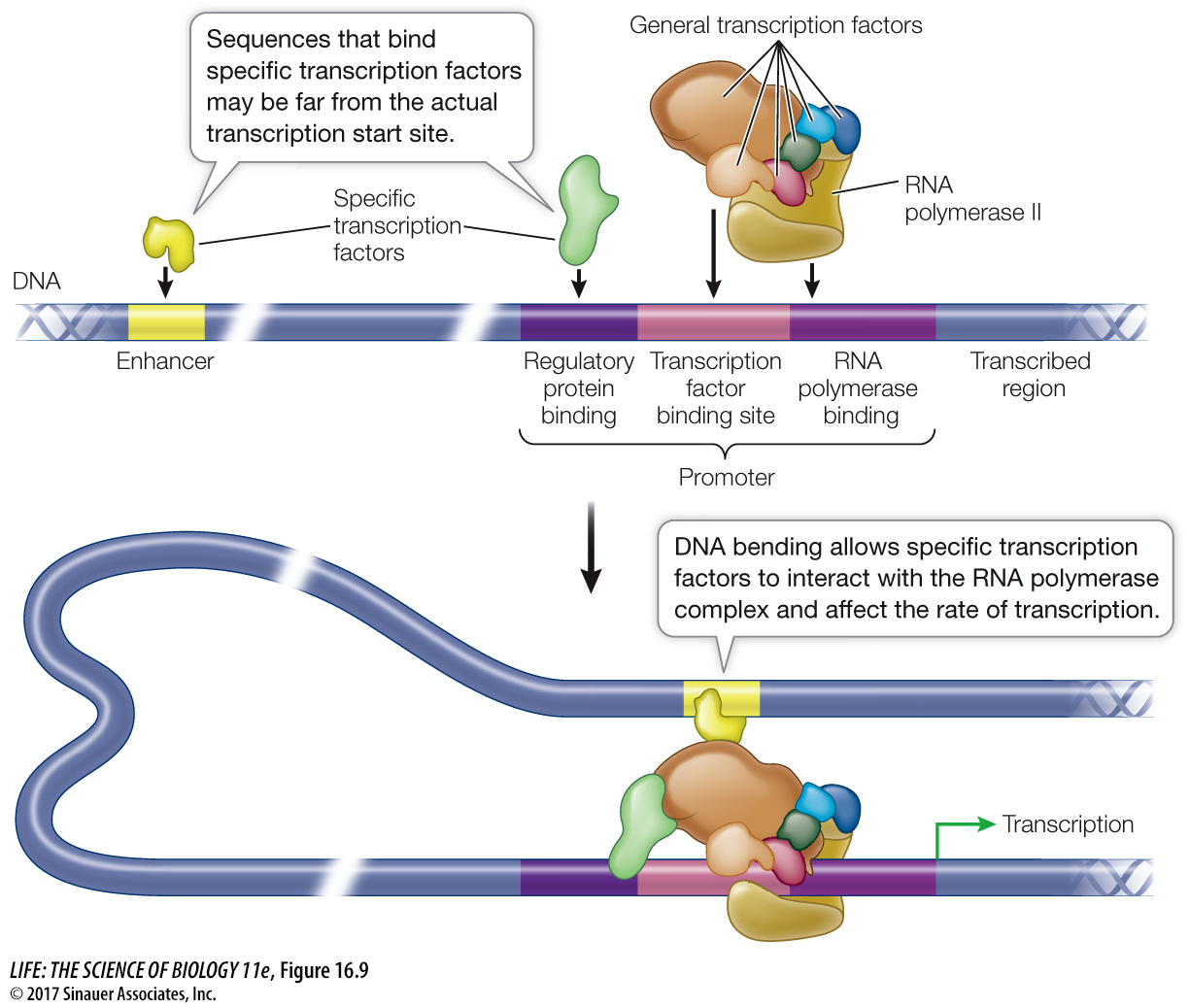Specific proteins can recognize and bind to DNA sequences and regulate transcription
Some regulatory DNA sequences are positive elements termed enhancers: they bind transcription factors that either activate transcription or increase the rate of transcription. Other regulatory elements are silencers: they bind factors that repress transcription. Most of the regulatory elements needed for correct expression of a gene are found within a few hundred base pairs of the transcription start site. For example, the mouse albumin gene promoter contains all the information needed for liver cell–

The combination of transcription factors binding to a gene determines the rate of transcription. For example, the immature red blood cells in bone marrow make large amounts of β-globin. At least 13 different transcription factors are involved in regulating transcription of the β-globin gene in these cells. Not all of these factors are present or active in other cells, such as the immature white blood cells produced by the same bone marrow. As a result, the β-globin gene is not transcribed in those cells. So although the same genes are present in all cells, the fate of the cell is determined by which of its genes are expressed. How do transcription factors recognize specific DNA sequences?